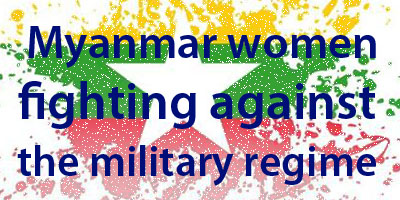A viral grassroots? Thinking about impacts of social media in grassroots environmental movement-building and advocacy
Conceptions of place and locality have always been important in grassroots mobilizations, whether at the level of the public square (traditionally a landmark site of dissent and collective action) or the particular ecological histories and realities of local communities. The significance of grassroots mobilization has been changed by social media, the viral culture of digital activism, cyber-spaces of gathering and connectivity, as well as the pervasive character of the hashtag. The relation of social media with activism is not something new. In the early 1990s, images of Marcos, the Zapatista leader from Chiapas, circulated widely over the internet, spurring global attention on extractive development. At the moment, the hashtag has replaced traditional media and has become a trademark of global movements such as #MeToo and #BlackLivesMatter.
This trend is significant for the environmental movement, which has shifted understandings of what constitutes grassroots activism in the last decade. For example, in Canada, nationwide movements like Idle No More (also #IdleNoMore) opposed a government bill in 2012 that would have reduced the rights and authority of indigenous communities, instantiating a change in the cultural character and political tactics of environmental mobilizations. The movement’s goals were amplified by cyber-spaces such as Twitter and blogs, and the signification of #IdleNoMore created a larger network of community.
While the #IdleNoMore activist paradigm changed the relationship between social media and the grassroots, criticism of the movement questioned the role of digital activism by arguing that an overdependence on the internet eroded the material realities of the movement. One can ask whether there can be meaningful engagement and potent forms of social resistance when digital spaces and activist tools become the end rather than a tool—and this is particularly interesting in critiques of ‘slacktivism’ the practice of sharing content on social justice via Facebook, Instagram, and Twitter as acts of raising awareness and boycotting organizations without necessarily getting actively involved.
The question that then arises is, how can we think of the grassroots today as we experience an intensified ‘digital turn’ as a cultural milieu? How do activists, educators, and community-members think of grassroots organizing and its power to incite, gather, and promote engagement, and how do they negotiate the role of social media and the proliferation of cyber-spaces in their work?
Defining grassroots
To better understand and situate this conversation, I spoke with grassroots organizers from three different organizations that mobilize local communities and use social media on different scales:
- Dr. Jennifer Baker, Vice-President at the Sierra Club Canada Foundation, a grassroots organization with a “think globally, act locally” mandate that mobilizes individuals in local communities for environmental education and advocacy.
- Natalie Caine, a grassroots organizer with For Our Kids Montreal, a parent-led organization that organizes for climate justice.
- Albert Lalonde, a law student, activist, and spokesperson for La CEVES: la Coalition étudiante pour un virage environnemental et social, a student collective created in 2020 that organizes for climate justice and intersectional social justice matters within student communities and allies.
In conversations with these activists, it’s apparent that grassroots activism is a people-centered form of activism that prioritizes collective action.
Albert Lalonde defined grassroots activism as engaging at a bottom-up scale. “Grassroots is about building power by the people for the people,” he said. “It is the only way to reach true democracy.”
In a different activist context, Natalie Caine emphasized grassroots organizing as deeply connected to place-based community connection and engagement to “curb this [climate] crisis by working collectively.”
Throughout the history of social movements, the term “grassroots” has become a political expression that signifies the centrality of getting communities and people organized for social change, from a “bottom-up” scale of growth. Grassroots movements stem from the roots of a community and its local attributes and needs, whether that is geographical place or bio-regions, socio-economic class, and other material realities.
The environmental connections
This is particularly visible in a grassroots organization like the Sierra Club Canada Foundation, one of the oldest environmental advocacy charities in North America. Dr. Jennifer Baker, who started working there as an administrative and communications coordinator and now is the Vice-President of the Board of Directors, explained to me how this nonprofit organization engages between regional and national scales, saying that the organization depends on communities who volunteer and organize for environmental advocacy.

“We have several chapters spread across different regions of Canada, and also a national office that helps coordinate the chapters.” Local chapters are established based on bio-regions (Atlantic, Prairies, Quebec, and Ontario) and usually adopt their own local projects and campaigns that are in turn “boosted by the National.” She gave the example of a recent project that mobilized for the protection of four hundred whales that travel to the Gulf of St. Lawrence in the summer and were unable to navigate the Canadian waters because of seismic testing.
Although grassroots emphasizes on the local, it is necessarily related to wider scales of cooperation and solidarity work with other organizations, Baker said. “I think that with grassroots, there has to be sort of the willingness to find like-minded organizations and pull resources toward a common goal.” She gave the example of a local campaign about “a broader conversation around fossil fuels and fossil fuel exploration, especially off the coast of Newfoundland” thus pushing for stronger connection between regional and national levels of engagement.
At the same time, Baker notes that individual chapters collaborate strongly with local groups and organizations, generating a wider network of advocacy, saying that “the more people you get engaged, the stronger you are as an organization.”
Apart from the interconnection between local and national (or even global) issues, grassroots movements in the environmental sector engage with the specific needs of constituencies in order to find the best solutions and out forward mobilization action plans.
Community and diversity
For Natalie Caine and her work at For Our Kids Montreal, the importance of community-building necessarily defines grassroots organizing for climate justice. Caine has worked professionally in nonprofits and environmental advocacy, and has been involved as a grassroots organizer for a couple of decades. However, she said that “when I had my son six years ago, I just was sensing and realizing that I needed a space that was parent- and family-friendly to be doing social change, organizing.” She turned to For Our Kids (originally called Families for Climate Justice), established in spring 2019 before the Global Youth Climate strike.

Caine emphasizes the role of neighborhoods and local parent networks as significant for the organization. “The point of our network is to help inspire parents or grandparents or guardians in their communities to find collaborators,” she said. “Our organizing model is really about organizing people to find collective power and be in teams or groups. And originally, before COVID, that was envisioned to be very place-based, [with people] who love their neighbours, people who are in your local kind of parenting group.”
She said that this was an important model for organizing people initially based at a closer place-based circle, but also interacting with other chapters and regions, especially during the COVID-19 pandemic where such spaces became mostly virtual.
Another important observation with regards to grassroots organizing is the role of diversity in the concept of community and its local attributes. This is evident in the ways Albert Lalonde explained the grassroots mandate of La CEVES in terms of intersectional environmental justice projects. According to Lalonde, the awareness of “how climate justice is linked to capitalism, colonialism, racism has really progressed” throughout a number of student strikes within local and global environmental movements, such as Fridays for Future, an international youth movement. He says that those strikes, which sometimes reached some 150,000 people, placed issues at the forefront that had been absent from the political field, such as Indigenous rights.
Digital activism and social media – the benefits
There are many ways grassroots organizations utilize social media for engagement. Most of the organizers I spoke with pointed to accessibility and rapid information dissemination as central benefits for digital campaigns, especially during the COVID-19 pandemic. Here are some central benefits of social media in grassroots movements:
Bolstering engagement and breaking space/time constraints
For volunteer-led organizations like the Sierra Club Canada Foundation, engagement is facilitated through a strong social media presence. Dr. Baker says that interest and engagement are the bases of organizing. “Digital organizing has to do with moving people up the ladder of engagement. People may just be really interested. And they might see a campaign on a social media channel, or they might even hear about us in the news and look us up.”
Baker also noted that virtual spaces of dissemination of knowledge worked very well with the mandate of the Sierra Club. An example would be webinars the network has developed since 2020, which she says expanded topics of environmental activism from scientific conversations to poetry readings, seminars on ECAM, anxiety and other psychosomatic conditions related to ecological anxiety.
Natalie Caine from For Our Kids Montreal also points to the role of online platforms, particularly Facebook, in gathering and sustaining their membership. “We’ve been utilizing Facebook groups, because they tend to be a little bit more in our demographic of that older people who aren’t on TikTok, or other channels or platforms,” she said. Caine further notes that social media platforms like Facebook groups remain prevalent. “They’re a default in people’s mind of how you tell the public about what you’re doing, or how to bring more people in.”
Expanding solidarity networks
Solidarity work and coalition-building are significant aspects organizers pointed to when it came to the role of social media in environmental activism. Albert Lalonde from La CEVES said that “social media do allow us to have our own platform, and compensate for some of the things and build understanding,” citing events and spaces like webinars, mobilizations hubs, and advocacy events that “make activism, education, and social justice accessible to all via its online platform.”

The digital model of organizing became a practice for this organization during the pandemic as physical gatherings on campuses were not an option, he said, comparing how this network used to mobilize students on campus and holding assemblies, promoting green circles, etc.
Challenges
Organizers also point out the challenges related to the use of social media for environmental activism. The following challenges were identified by grassroots activists:
Confusion over the ever-changing landscape of social media
Natalie Caine, for example, mentions that while Facebook groups are useful in maintaining their organization’s membership online, confusion and ever-changing choices over different platforms are some issues she identifies in terms of social media and environmental advocacy: “there’s, I think, confusion about which is the best platform for what goal and what purpose” since social media involve “a landscape that keeps changing” notes Caine. Platforms like TikTok and Instagram, for example, are also prevalent in activist circles for climate justice, apart from the now-more-outdated Facebook/Meta platform.
Caine also asks as to whether social media allows for grassroots environmental organizations to reach the right groups of active participants who will eventually get out there and organize communities of parents and guardians. Additionally, she also brings up the issue of time and investment, questioning “how much time do we invest to build social media channels.”
Scale and effective mobilization
Social media, especially through the directness of the hashtag and the creation of viral movements, can arguably bolster what happens at the grassroots level in terms of organizing people, creating political pressure, and even “blocking infrastructure,” Lalonde told me. At the same time, however, the matter of scale is another consideration.
In the context of For Our Kids and parent-led communities, Caine told me that while social media enable networking and collaboration, they also run the risk of abstracting physical spaces and the specific material realities and needs of different communities. “We also know that as climate change continues to happen, the impacts of this problem are going to hit people in different localities and space differently,” she said. “And so, yes we could collaborate across the network, do a lot of nationally-focused work, and not even need to talk to our neighbors or anyone in our town. But I guess the other argument for why we should remain place-based is that as climate impacts increase, it also gives us a community in the geographical sense.”
Caine also told me that she views scale as a main challenge with social media and climate justice activism. As she said, while social media enable a tradeoff of resources, it doesn’t provide the benefit of people getting more involved.
The issue of scaling up collective action is one of the anxieties her organization has about the future of the environmental movement. “What I’m afraid of is the scale that we need to address the climate crisis and other social justice issues in our world. They require so many more people and it’s hard to organize in a way that’s going to reach all those people.”
Similarly, for La CEVES, Lalonde said that “social media doesn’t have that depth, and doesn’t have that same power” of assembling people on the street and creating political pressure through protests and changes in the community. However, Lalonde also noted that right now there is a dependence on social media, which he interprets as “a huge lack and potency because activism, like mobilizing, is about having conversations with people.”
Continuing the conversation, accepting activist “paradoxes”
Commenting on the paradoxical nature of social media as related to consumerism and market values, Lalonde said that he has “adopted paradox as the basis of activism.”
Considering all different views I have gathered on this conversation, paradox is perhaps an insightful way to grapple with the pervasive role social media has in grassroots power and mobilization.
As Lalonde put it, “Social media is like one of the biggest, most visible manifestations [of this paradox]. It’s not a choice, we have to use it to reach people, but at the same time it’s so far away from our ideals, and it’s so difficult.”



